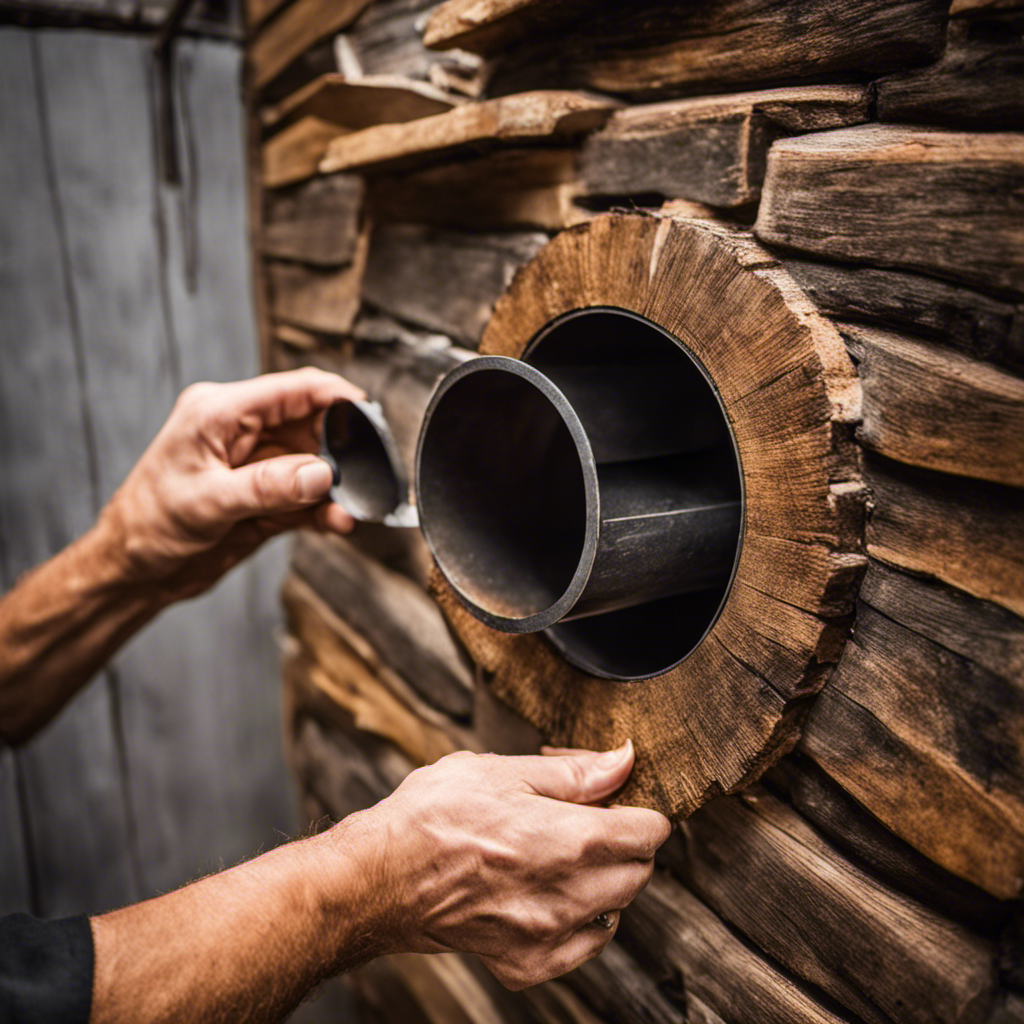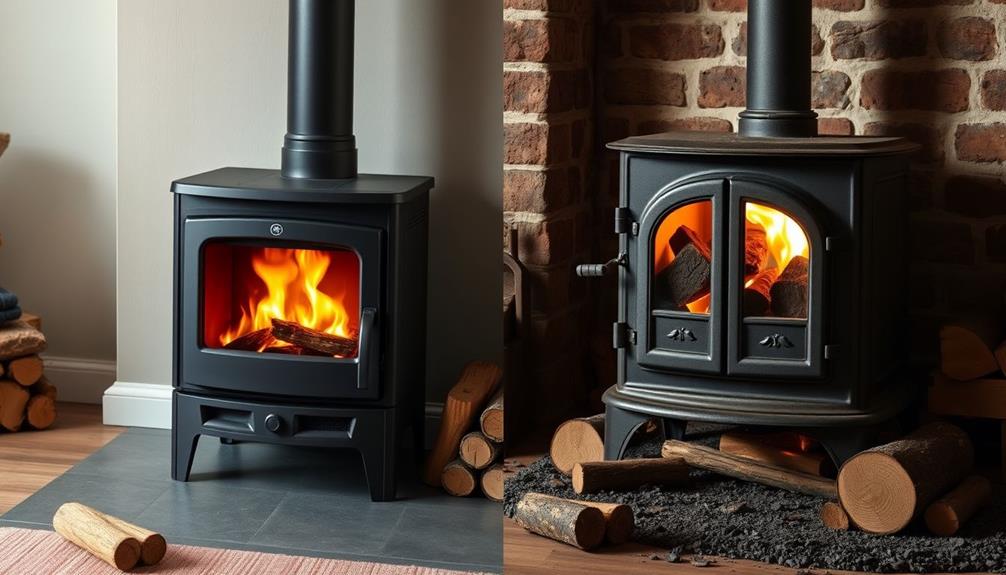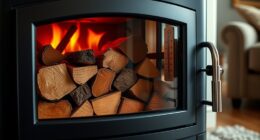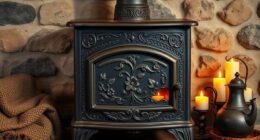
So, you’ve got yourself a wood-burning stove, haven’t you? Look, if you’re aiming to keep a cozy and welcoming vibe, it’s crucial to know how to use your wood stove’s damper properly.
Lucky for you, I’ve got all the knowledge and tips you need to become a damper pro. In this article, I’ll guide you through the ins and outs of opening, closing, adjusting, and maintaining your wood stove damper.
Let’s get started, shall we?
Key Takeaways
- Wood stove dampers regulate airflow and ensure efficient burning of wood
- Adjusting the damper controls fire intensity and heat output
- Proper damper use is essential for safe and efficient operation of the stove
- Regular maintenance and cleaning of the damper is necessary for efficient heat control
Understanding the Purpose of a Wood Stove Damper
I really need to learn more about the purpose of a wood stove damper.
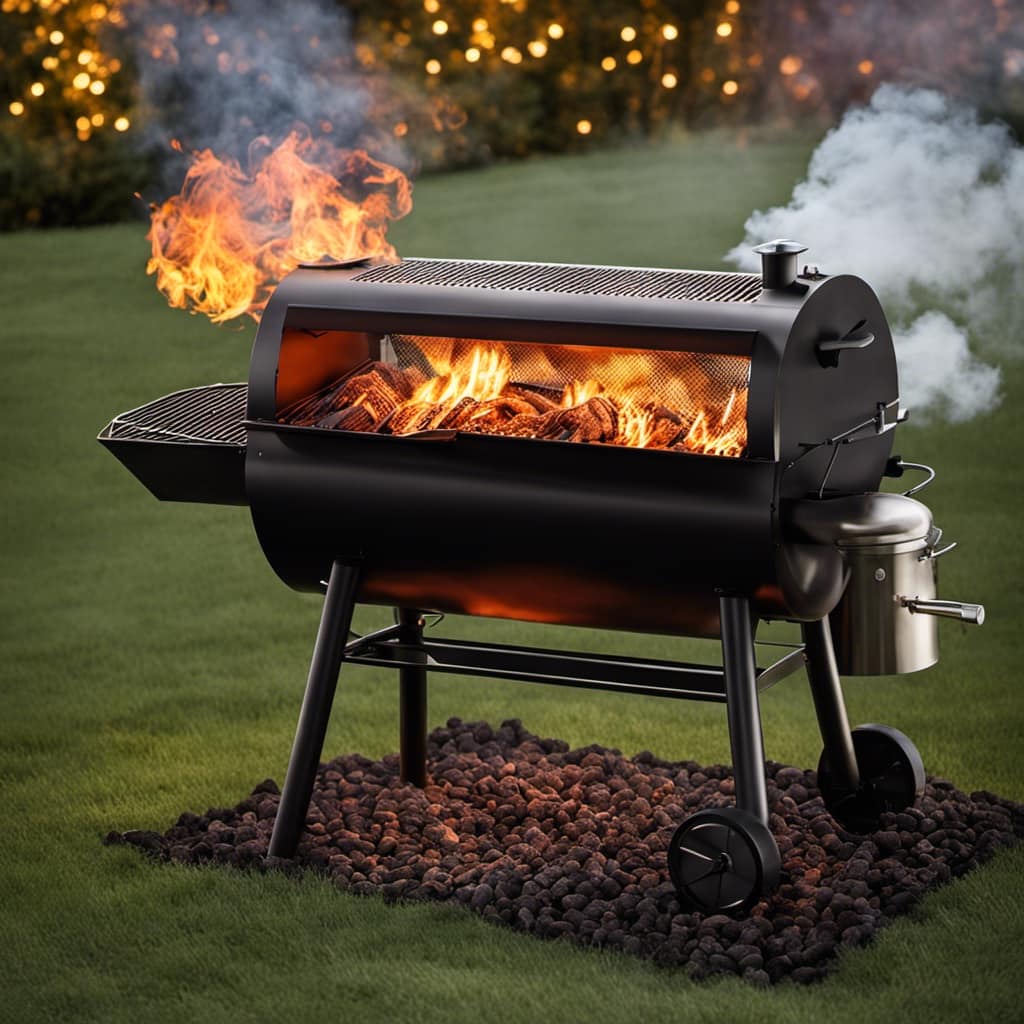
Wood stove dampers are crucial for controlling the airflow in the stove and ensuring efficient burning of wood.
The main purpose of a damper is to regulate the amount of oxygen that enters the stove, which affects the combustion process.
By adjusting the damper, you can increase or decrease the fire’s intensity and heat output.
Proper damper use is essential for maintaining a safe and efficient wood stove operation.

Common damper problems include a stuck or broken damper, which can lead to improper ventilation and inefficient burning.
Locating and Identifying Your Wood Stove Damper
One can easily locate and identify their wood stove damper by referring to the manufacturer’s manual or by inspecting the stove for a lever or handle. Once you have located the damper handle, it’s important to understand how to use it effectively. Here are three key points to keep in mind:
-
Proper positioning: The damper handle should be in the open position when starting a fire and closed when the fire is fully extinguished. This helps control the flow of air and regulates the burning rate.
-
Temperature adjustment: By adjusting the damper, you can control the temperature inside the stove. Opening it allows more oxygen in, resulting in a hotter fire, while closing it reduces the airflow and lowers the temperature.

-
Troubleshooting issues: If you notice smoke coming out of the stove or the fire isn’t burning efficiently, check the damper handle. It may be partially closed or obstructed, preventing proper airflow. Adjust or clear any obstructions to resolve the issue.
Opening and Closing the Wood Stove Damper
The key to effectively using the wood stove damper is knowing when to open and close it for optimal airflow control. By using the damper handle, you can easily control the amount of air entering and exiting your wood stove.
When starting a fire, it’s important to open the damper fully to allow for maximum airflow and help ignite the wood. Once the fire is established, you can adjust the damper to control the intensity of the fire. Closing the damper partially will reduce the amount of air, resulting in a slower burn and less heat output. Conversely, opening the damper wider will increase the airflow, creating a hotter, more intense fire.
Mastering the art of using the wood stove damper is crucial for efficient heating and a comfortable living space.
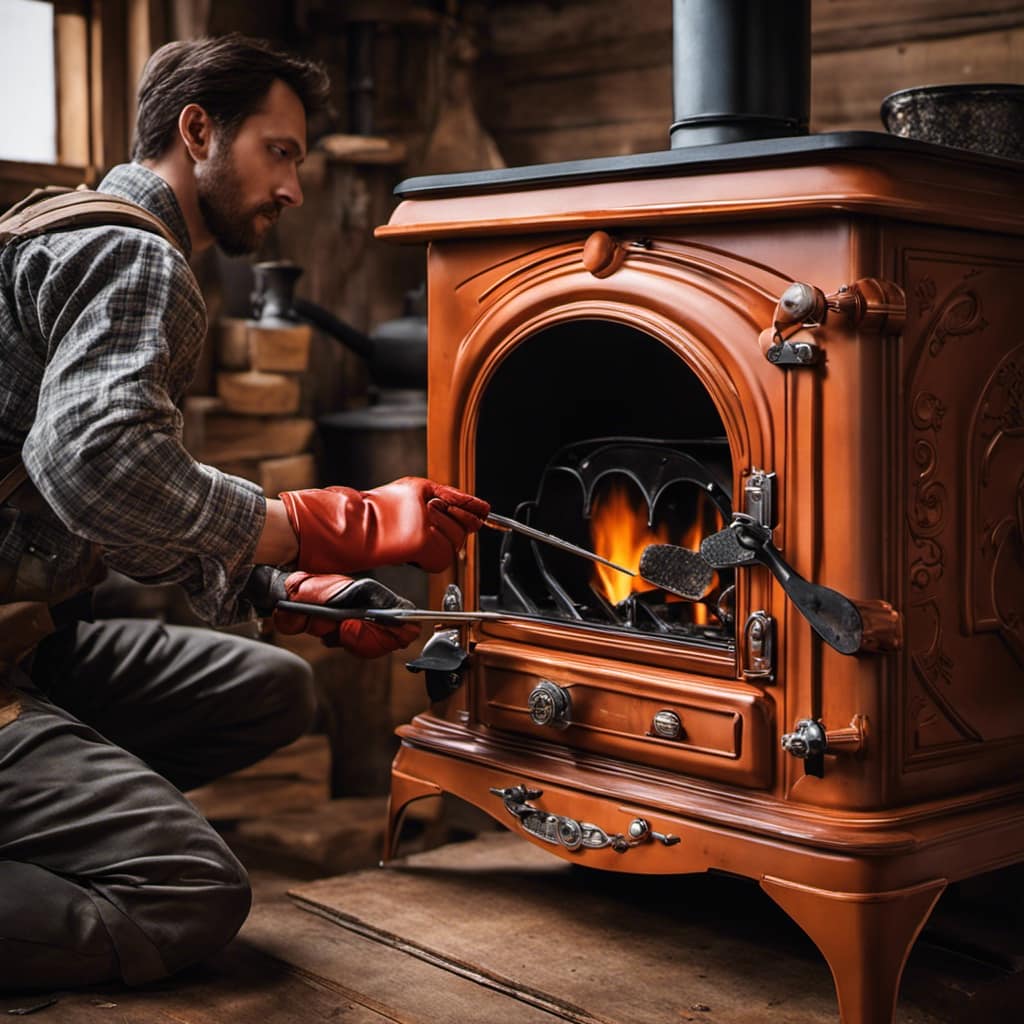
Adjusting the Damper for Heat Control
To effectively control the heat, simply adjust the damper accordingly. The damper is a crucial component of a wood stove that regulates airflow and combustion.
Here are three important considerations when using a damper for heat control:
-
Using a damper thermometer: Installing a damper thermometer provides a reliable way to monitor the stove’s temperature. By adjusting the damper based on the thermometer’s readings, you can achieve the desired heat output.
-
Troubleshooting damper issues: If you notice that the damper isn’t functioning properly, it’s essential to troubleshoot the issue. Common problems include a stuck damper, a loose damper handle, or excessive creosote buildup. Addressing these issues promptly ensures optimal heat control.

-
Regular maintenance: To maintain efficient heat control, it’s crucial to clean and maintain your wood stove damper regularly. This involves removing any debris or creosote buildup and ensuring the damper mechanism operates smoothly.
Maintaining and Cleaning Your Wood Stove Damper
I need to clean and maintain my wood stove damper regularly to ensure optimal heat control. Cleaning precautions are important to prevent any potential fire hazards or buildup of creosote.
One of the first steps in cleaning the damper is to make sure it’s completely cooled down. I remove any ashes or debris using a brush or vacuum specifically designed for stove cleaning.
It’s important to wear protective gloves and a mask to avoid inhaling any dust or soot. I also inspect the damper for any signs of damage or corrosion, as this can affect its functionality.

Troubleshooting common issues, such as a stuck or noisy damper, may require a professional’s expertise.
Regular cleaning and maintenance of the wood stove damper will ensure efficient heat control and safe operation.
Frequently Asked Questions
Can a Wood Stove Damper Be Used to Control the Amount of Oxygen in the Fire?
Yes, a wood stove damper can be used to control the amount of oxygen in the fire. By adjusting the damper, you can regulate the airflow and ensure efficient combustion, which leads to better heat output and reduced fuel consumption.
How Often Should a Wood Stove Damper Be Replaced?
When it comes to the lifespan of a wood stove damper, it’s important to know when to replace it. Signs of a worn-out damper include difficulty opening or closing, excessive rust, and smoke leakage.

Is It Necessary to Open the Damper Before Starting a Fire?
Yes, it is necessary to open the damper before starting a fire in a wood stove. Not opening the damper can lead to a buildup of smoke, carbon monoxide, and other dangerous gases inside the house.
Can a Wood Stove Damper Be Used to Control the Amount of Smoke Produced?
Yes, a wood stove damper can be used to control the amount of smoke produced. By adjusting the damper, I can regulate the airflow, which affects the combustion process and reduces smoke.
Does the Type of Wood Being Burned Affect How the Damper Should Be Adjusted?
Adjusting the wood stove damper properly is crucial. The type of wood being burned affects how the damper should be adjusted. It’s essential to understand this impact to ensure optimal performance and minimize smoke production.
Conclusion
In conclusion, mastering the art of using a wood stove damper is essential for efficient heat control and optimal performance of your wood stove.

Just like a conductor guiding an orchestra, the damper allows you to fine-tune the warmth in your home.
By understanding its purpose, locating and identifying it, and knowing how to open, close, and adjust it, you can ensure a cozy and comfortable environment while minimizing energy consumption.
So, let your wood stove damper be the maestro of warmth in your home.
Growing up surrounded by the vast beauty of nature, Sierra was always drawn to the call of the wild. While others sought the comfort of the familiar, she ventured out, embracing the unpredictable and finding stories in the heartbeat of nature.
At the epicenter of every remarkable venture lies a dynamic team—a fusion of diverse talents, visions, and passions. The essence of Best Small Wood Stoves is crafted and refined by such a trio: Sierra, Logan, and Terra. Their collective expertise has transformed the platform into a leading authority on small wood stoves, radiating warmth and knowledge in equal measure.




